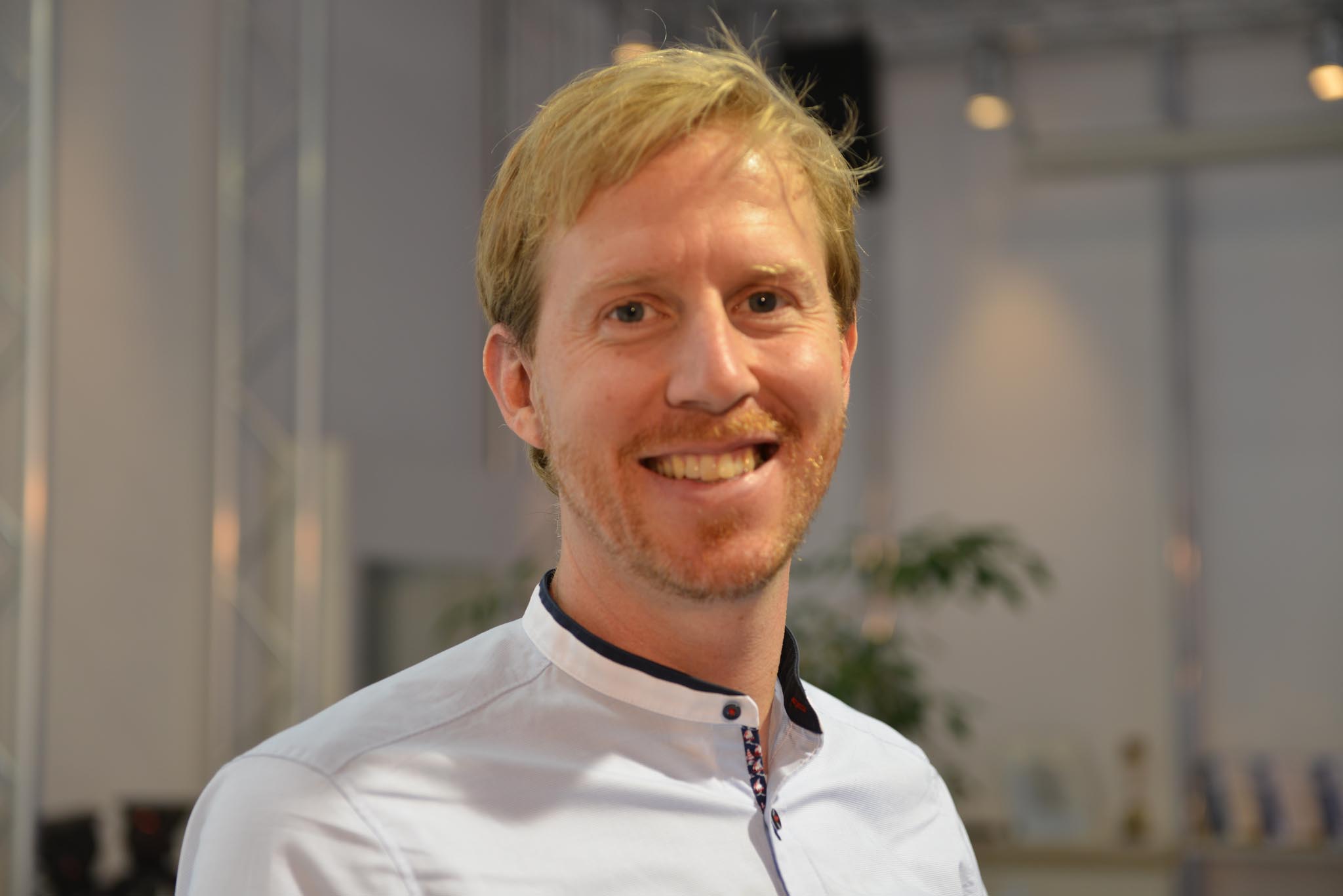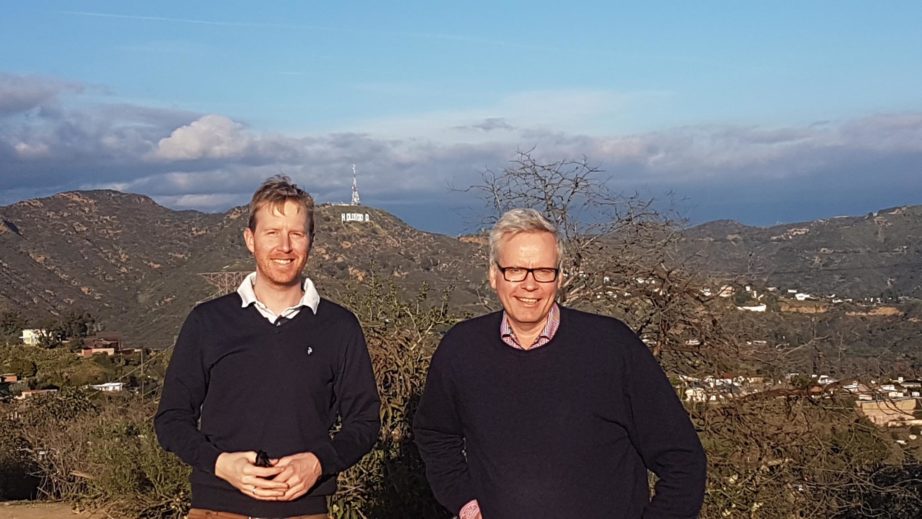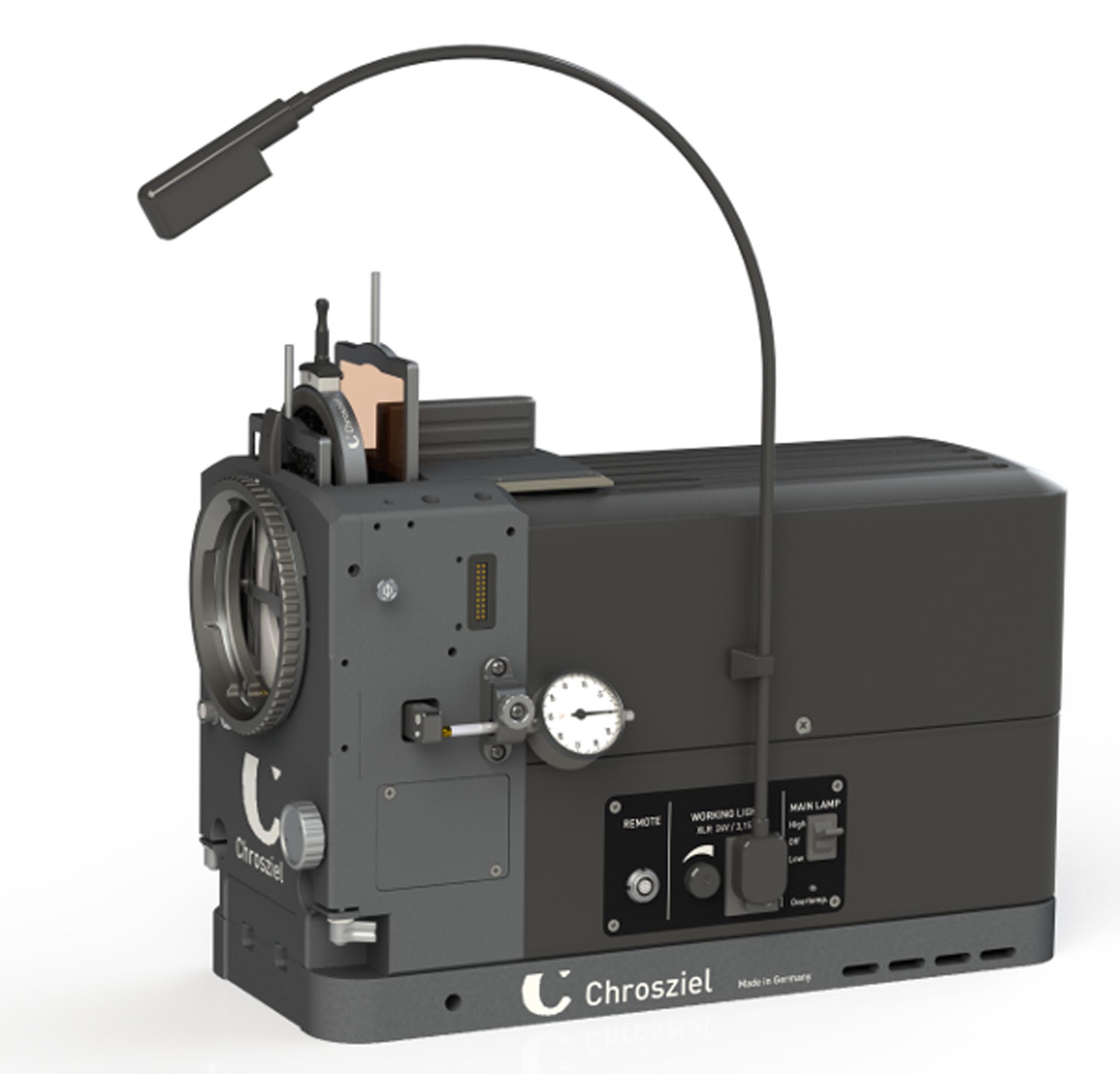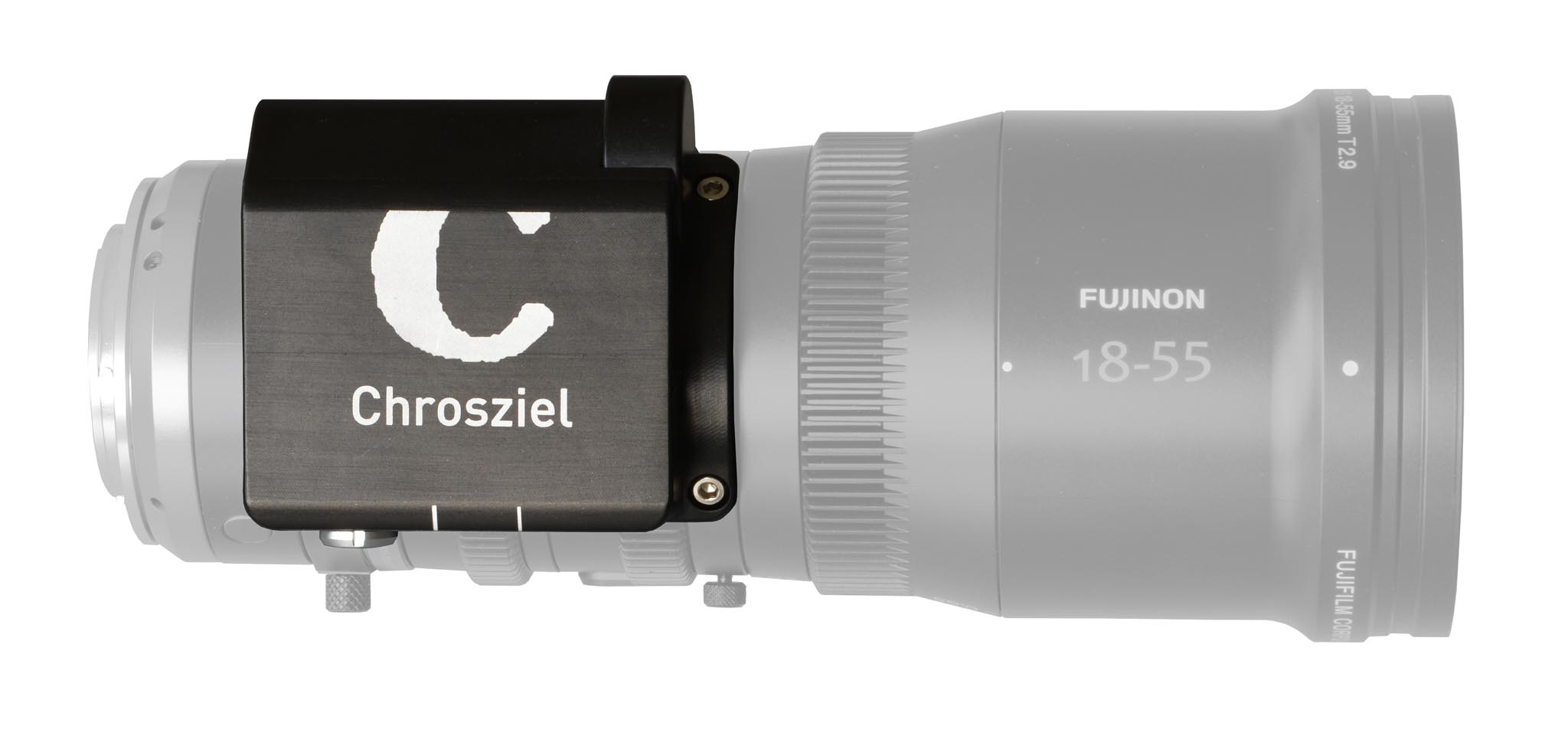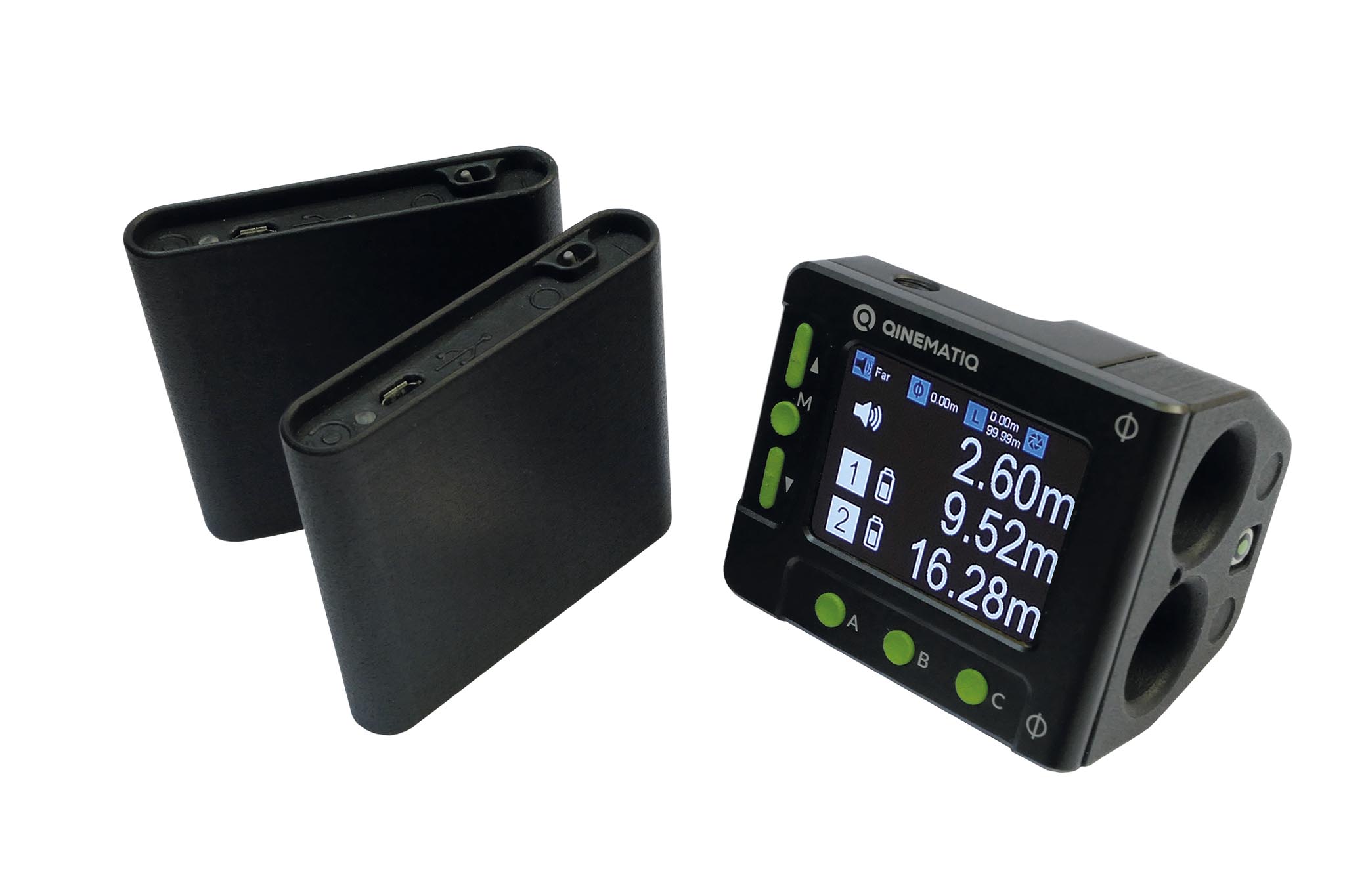What a day. NAB nixed. Non-stop news. But, on the bright side and pardon the screenplay simile, a new sheriff walked into town. The town is Kirchheim, near Munich. Timm Stemann has been appointed Managing Director at Chrosziel GmbH.
Timm is a familiar character in the industry. He has been working at Chrosziel for the past two years on staff and five years before that as a consultant. He is well-known in the industry, having developed the P-TPCXPL and P-TP7 lens test projectors, servo zooms and wireless lens controls, among other products.
Timm brings with him a refreshing understanding of life on location and set. He has worked in motion picture production as a stereoscopic supervisor, camera operator, editor and technical consultant. From 1999-2017, he was Managing Director of CYBER-LIGHT, renting equipment and producing corporate videos and commercials. From 2013, he also worked as Managing Director of Concon International—consulting for the media production industry, distributing 3D and 4K shows and running the content discovery app Watchnow. He grew up in Germany, was an exchange student during high school in Missouri, and graduated from Illmenau University of Technology with degrees in engineering and media. His thesis on resolution in motion imaging was—no surprise here—done in cooperation with ARRI in Munich.
Flashback to 1973: Chrosziel GmbH was founded by industry legend Alfred Chrosziel. He was a hero to many cinematographers, assistants and Steadicam operators afflicted with chronic cases of retrofit syndrome. If you wanted a protective rubber bumper on your mattebox eyebrow, as I did, Alfred was your man. Of course, you talked to Gertrud first, who really ran the practical matters of the business.
Alfred and Gertrud sold the company in 2006. Alfred put his engineering prowess into the vineyard they purchased in Formentera, complete with a custom-made bottling machine.
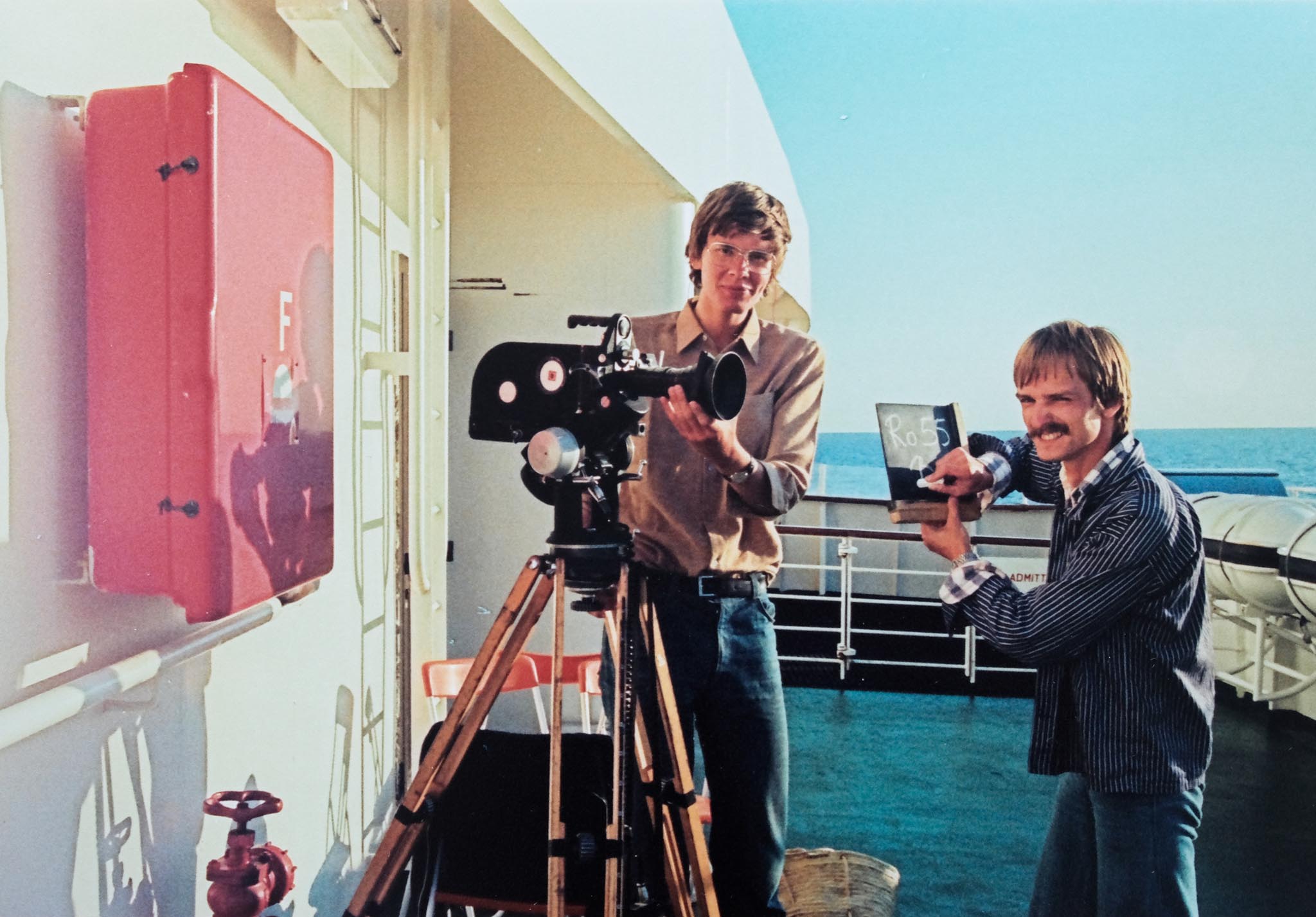
Harm Abrahams as Camera Assistant (left), Manfred Tesch (right) in July 1976 with Eclair NPR, Angenieux 12-120, Sachtler + Wolf head.
The new owners of the company were Harm Abrahams and Jürgen Nussbaum. Harm was a sound recordist and camera assistant who moved into a successful career as an investment banker. He grew the Chrosziel company into a global enterprise.
And then, 14 years later, Harm Abrahams and Timm Stemann called FDTimes with news of the latest episode in the company’s story. Here is a report of our discussion.
Jon Fauer: Congratulations. This is a nice surprise. Can you please give us some background?
Harm Abrahams: To make a long story short, we decided to make a transition in the leadership of the company. As of Friday, February 28, 2020, Timm Stemann has taken over as Managing Director. He acquired the majority of company shares. Timm has been our company’s CTO, product marketing and sales director for more than two years, and was a consultant for five years before that. I am now a minority shareholder and continue as an active advisor. Furthermore, we will put additional equity into the company to facilitate innovative development.
Chrosziel, as a company, has been in business for almost 50 years. Every once in a while, you have to refocus as markets move into other directions. Our flagship product has been the lens test projector. We will definitely continue to work on lens testing equipment. Our other products include remote control and accessories, which we’ll also will push forward.
Metadata is a common theme lately. Our projector distinguishes itself with the ability to read out and edit metadata from lenses. In the future, our wireless FIZ and additional systems will also be able to digest metadata. So, metadata will be an important ingredient for Chrosziel in the coming years.
How did this transition come about?
Timm Stemann: The future of the company was something Harm and I talked about. I developed a business plan, a strategy for products and an outline of how Chrosziel could evolve. We looked at expanding the range of lens test equipment, professional camera accessories and lens control systems. For example, the lens test projector is a very modular, universal product. Based on that, we are ready to start generating data with the projector and then bring that into new products to be used in field—like wireless lens controls and other electronic products.
Harm, what are you going to do next, when you grow up?
Harm: I have a noncompete clause in the industry for a while, of course, and I will be COO of a consumer retail company.
How do you perceive the markets are changing?
Timm: The speed of development has increased. The amount of time for new cameras and new technology being introduced, and then replaced by another new product, has sped up. Also, I find it very interesting how the way users work with products has changed. The world is connected and customers expect support almost in real time.
And, often the winners are those who can get the best products to market first.
Timm: The way you do marketing has changed as well. The amount of information users get on the internet puts companies into situations where they have to work faster and be -more focused.
Let’s talk about your new Large Format lens projectors. I hear they are being delivered all around the world.
Timm: They are at manufacturers: ARRI, Angenieux, SIGMA, Vantage, P+S Technik, TLS and Atlas, among others. Rental houses, repair facilities and distributors include ARRI, Otto Nemenz, EMIT, Duclos, SANWA, NAC, Cinerent, Camera Department, Cine Mechanics, LVR, Commander, Camtec and more.
One of the foundations of your company has been accessories. Where do you go from here?
Timm: We will develop lightweight supports, lens supports, handles and ergonomic accessories for the major cameras. Currently these include Sony FX9 and Canon C500 Mark II. Every time there’s a new camera we would like to release new products for it. We’d like to build on our mattebox and follow focus range which has always been an important part of our lineup. We’ll work on both mechanical and digital tools for motion picture production.
The accessory business right now seems rather crowded. How does Chrosziel fit and where do you see that market going?
Timm: We do not see our company in the mass market. We are positioned to deliver small to mid-range batches—more or less in 50-piece batches where we can carefully control quality. It’s a craftsmanship approach. And as someone who worked on set in film production, I appreciate the value of being able to provide customized products to camera crews. This is something I would like to pursue.
In the past, there may have been a perception that Chrosziel was a very expensive brand. I would like to explain that our pricing is set carefully and is quite competitive. We are positioned to make high quality products in a fair price-quality ratio. I’d also like to mention that about 99% of our supply chain is right here in Germany and maybe 95% comes from right here in Bavaria.
Bavaria has long been considered the center of the cine universe for fine mechanics and precision machining. You have been working full-time at Chrosziel for two years. What are you most proud of?
Timm: Our tiny yet powerful servo zoom drives for Fujinon MK lenses were an unbelievably good success. We are now working on making them compatible with the Sony FX9.
Furthermore, our new lens projectors—covering all image circles through Large Format up to a 60mm image circle—have been extremely rewarding. The new Smartranger 2 distance measuring device, with its additional Tag radio receivers, has been integrated into our MagNum wireless FIZ system, and it even provides 3 distances with auto focus assist functionality.
Are more users asking for customized accessories and products?
Timm: Getting back to my time working as a stereoscopic supervisor on set, almost every crew member always wants to modify something or come up with new ways of working. If a customer has an idea, we will be open to trying it, if possible. Our company’s new business plan includes investment to develop innovative gear. We increased our staff this month and will continue to hire additional product designers, CAD specialists and developers. We even changed the management structure in order to develop products together with users and with other manufacturers in a rapid and professional way.
I think we’re at a point where every DP, every AC and every production wants to be unique and different. This personalized touch you suggest, even if it’s a slight modification of an existing product, would be welcomed by us all.
Timm: Fortunately, we have already started doing this. For example, we made custom diameter gears for our motors to fit the small size of underwater housing. With our lens test projectors, some customers asked if they could have their custom logo on the reticle. We customized our projectors for ARRI. And we customized Angénieux’s reticle for their manufacturing of Optimo Prime lenses.
Explain why lens metadata is helpful on your lens test projector.
Timm: It’s crucial because not only can you check that the physical focus marks are spot on, but also you can see whether the encoder inside the lens is giving you the same numbers. For example, if you focus the lens barrel at nine feet, the projected image should be sharp. But if the encoder inside the lens is not calibrated correctly, the Focus Puller’s wireless lens control will display the wrong value. Or, if a zoom lens’s metadata is off, it will hand off the wrong readings to post production. Accurate metadata is important in post for compositing, VFX, automatic image correction and many other tasks.
I understand that you built a special version of the lens projector for ARRI manufacturing and service worldwide.
Harm: This baby has many fathers. Thorsten Meywald asked us for a unique version that used AMIRA/ALEXA Mini lens mounts and the larger XPL mount along with its mounting screws. That way it is standardized in all of ARRI’s lens facilities.
Moving on to accessories, how would you define your market, your customers?
Timm: We tend to focus on the independent and owner-operator market, including documentaries, television, ENG and more. That’s where we are very strong and have good sales. It is a mid-range market. It is a very diversified group. Our idea about Chrosziel has consistently been to focus on all the details, large and small, that help our customers in their daily work on productions. To give you an example: a screw that is not a captive screw can be very problematic. If you are shooting in the snow or desert or jungle and the screw falls off—that could ruin your shooting day, or worse, shooting days.
Another example of our attention to detail is the Lens Servo Drive. We said from the outset that it cannot simply be a motor on the lens and a box on the camera. It needs to be one small, integrated unit that attaches unobtrusively to the lens with as few cables as possible. Camera operators hate cables. So, we reduced it completely to the smallest form factor and the fewest cables.
In summary, we really attempt to consider every little detail during development of our products. And we look forward to continuing this journey.

